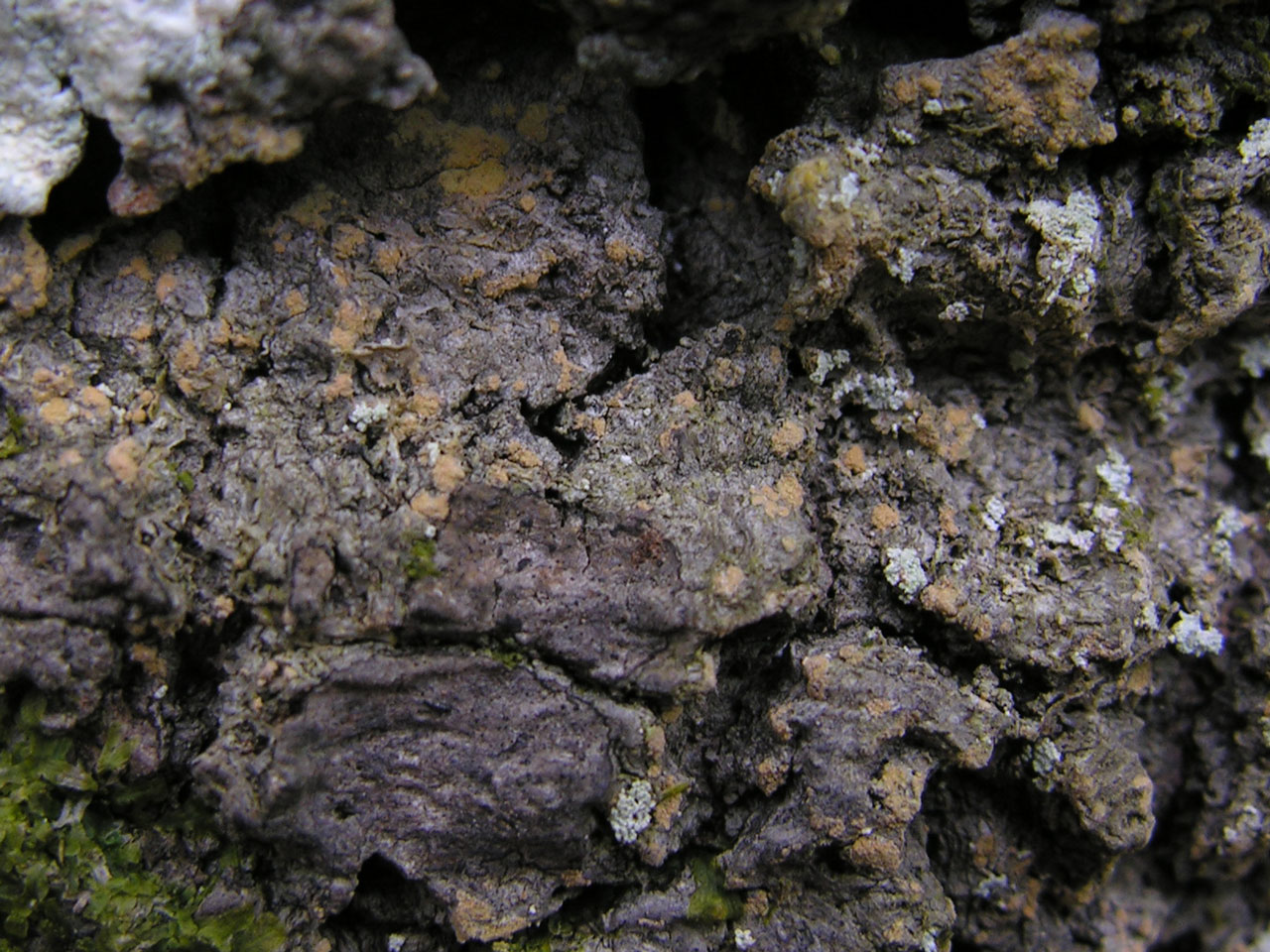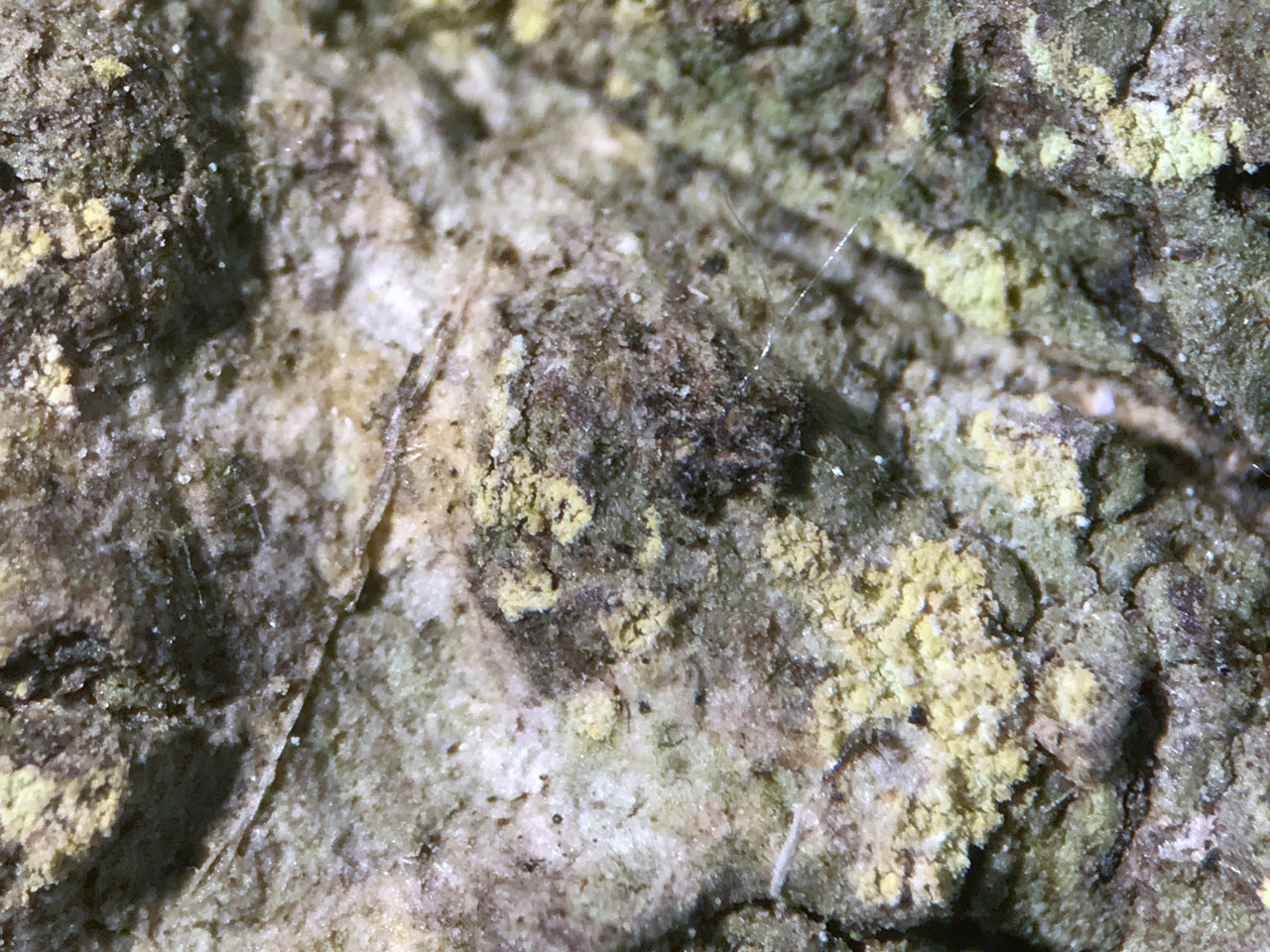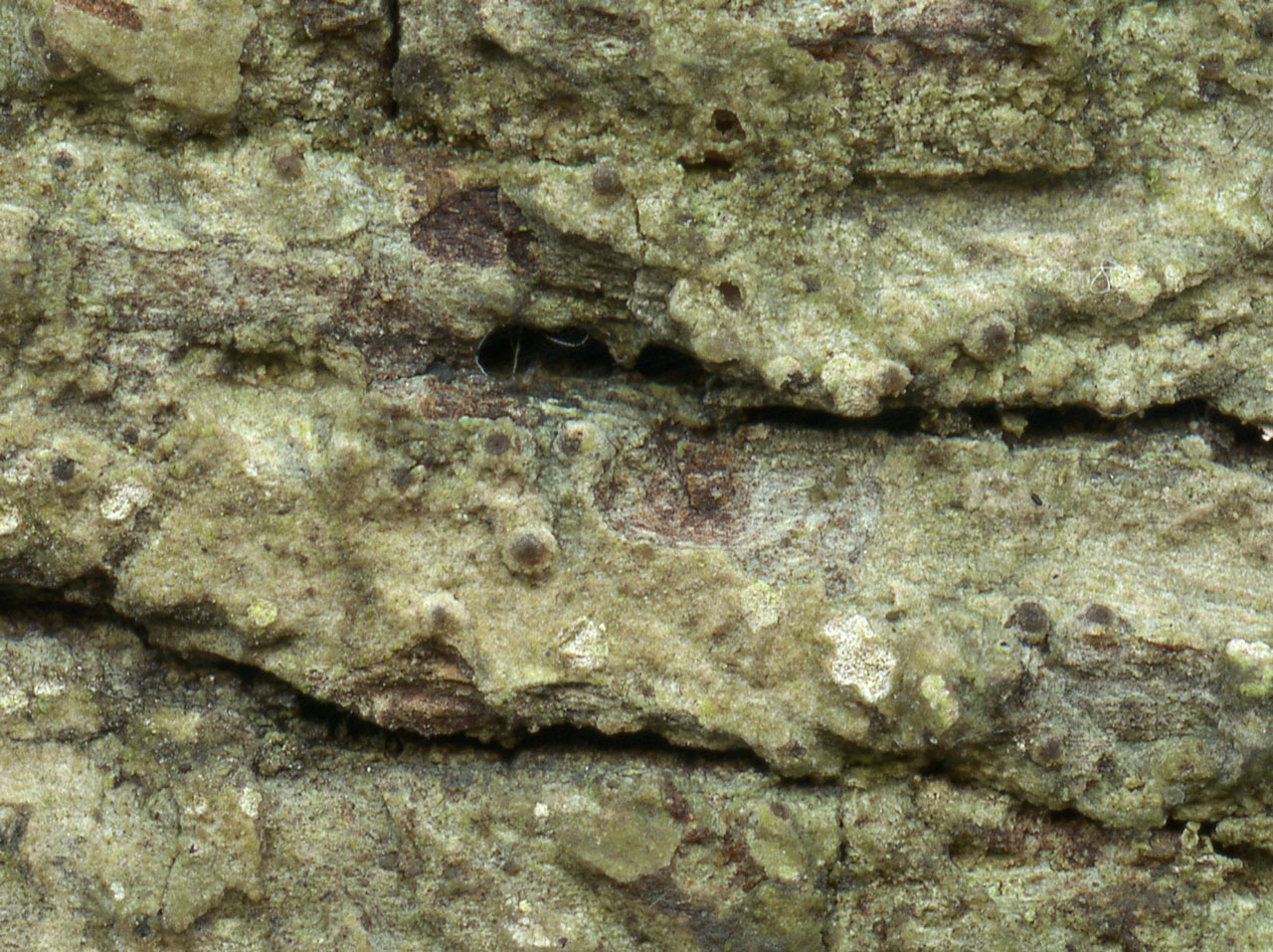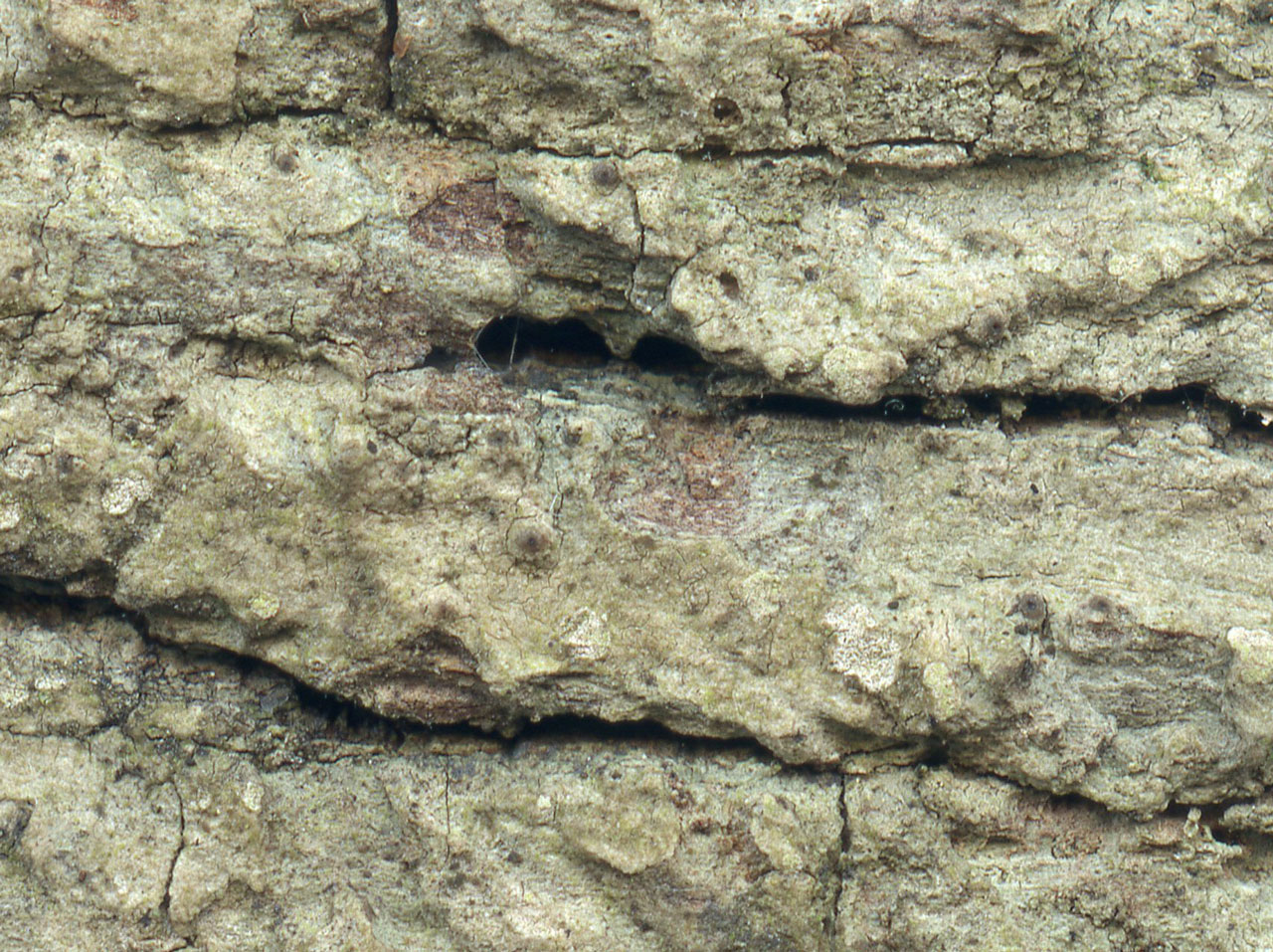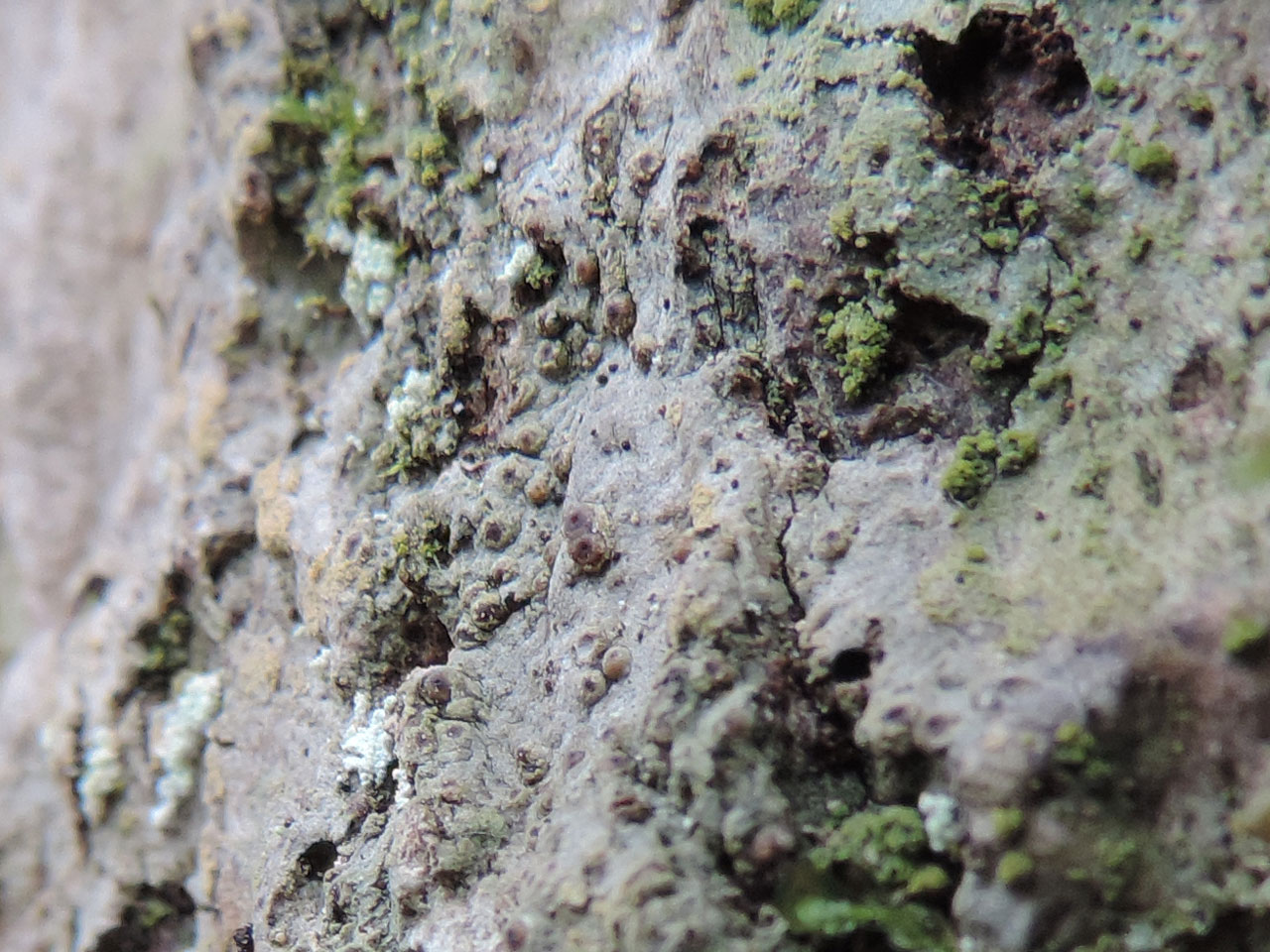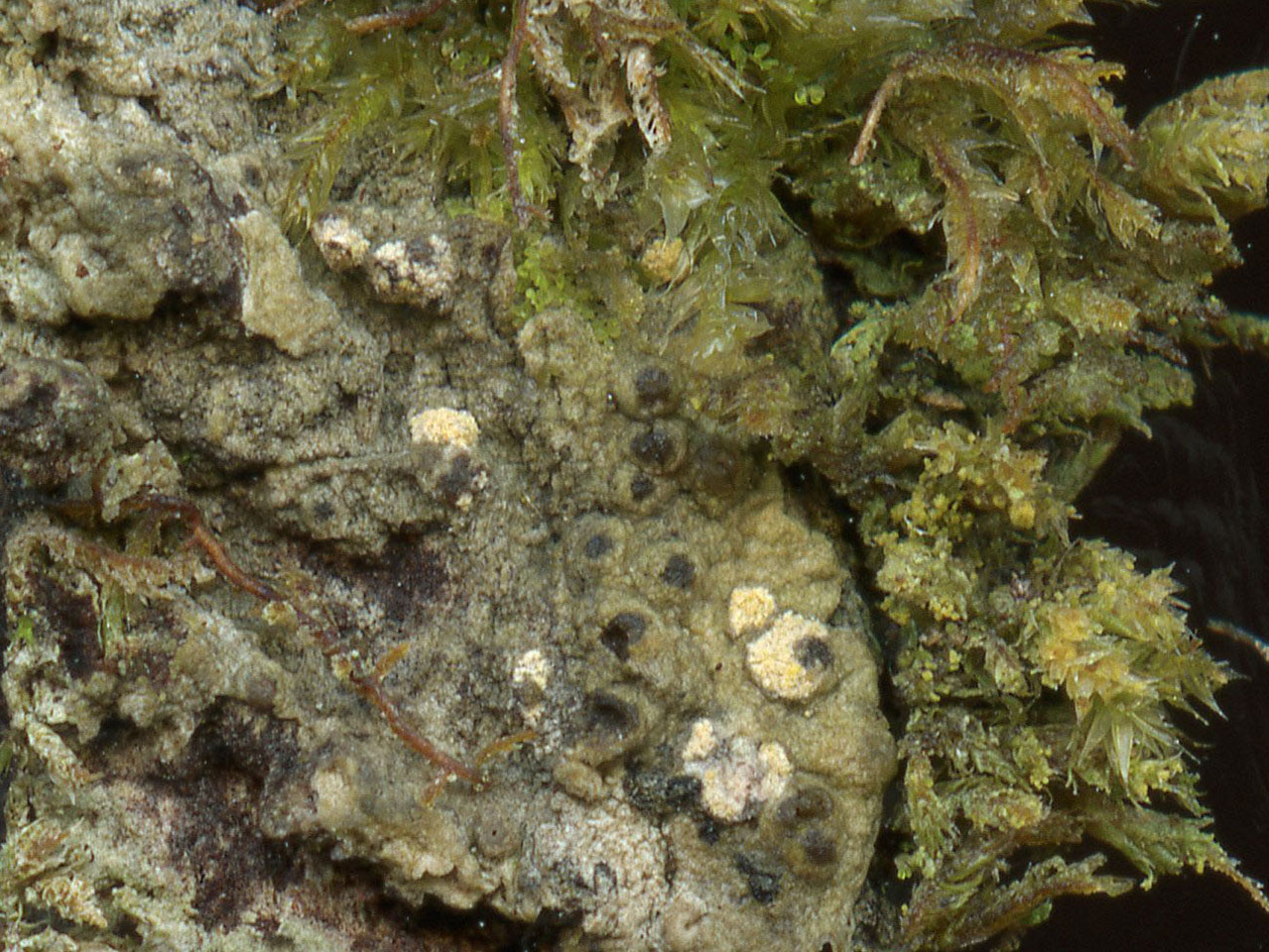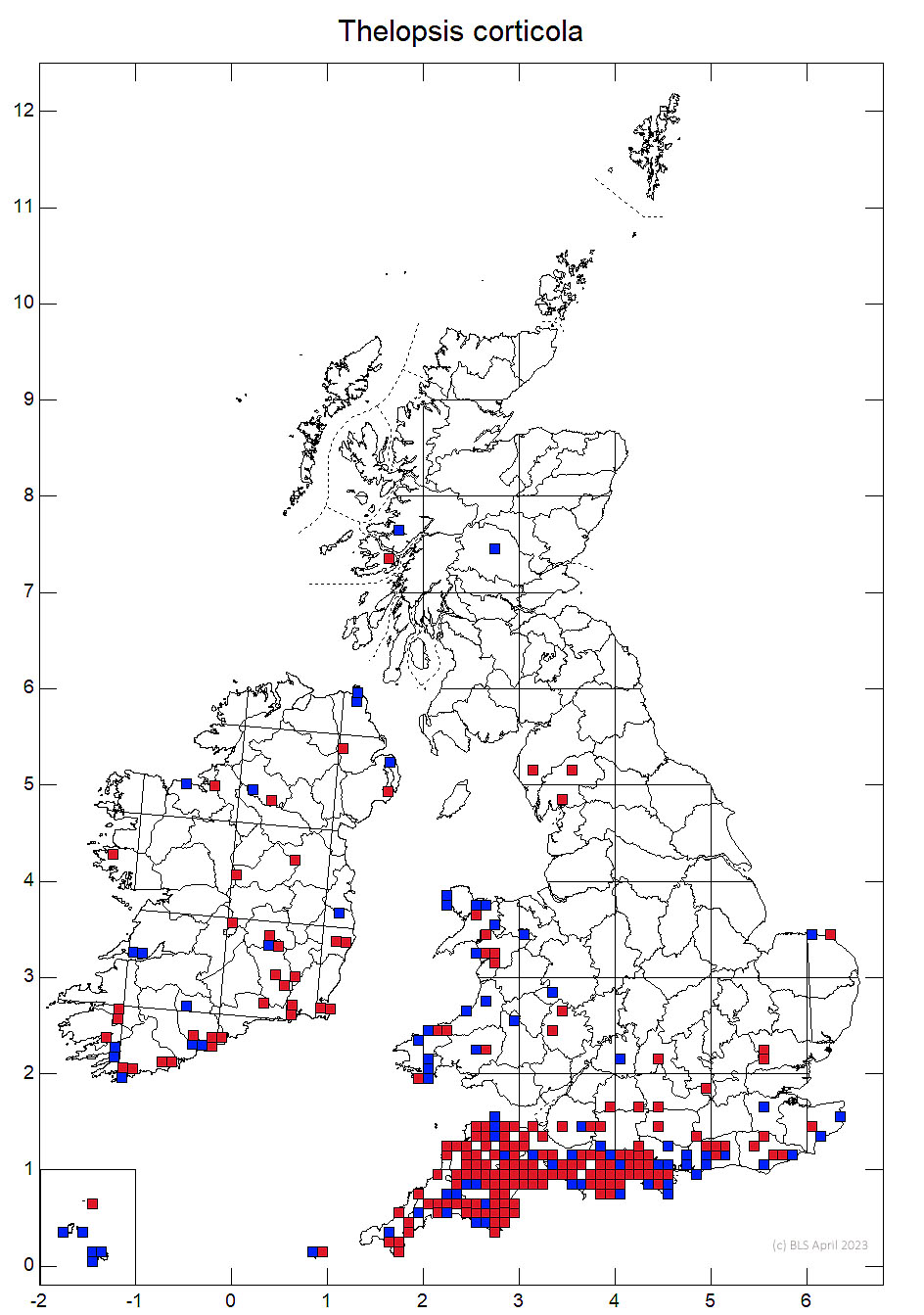A southern oceanic crust forming lichen that is frequent on base rich flushed bark on sheltered veteran trees in the south west but rare beyond. Normally sterile but identified by its ochraceous C– patchy soralia, with fine compacted soredia. There are several look a likes which differ by various combinations of darker orange colours, C reactions, and having courser soredia. When fertile is has similar perithecia to Thelopsis rubella but those of T. corticola are more immersed in the thallus and have smaller spores.
Thallus wide-spreading, effuse, continuous, thin to thick, grey-green in shade, suffused dull brown in more exposed situations; prothallus pale, usually inconspicuous; soralia initially punctiform, 0.2–0.7 mm diam., scattered, sometimes becoming ± patchily contiguous in irregular and erose groups 2–3 mm diam., typically even-coloured unless damaged, greenish fawn, pale grey-brown or ochraceous, fading to whitish grey in dried collections. Soredia fine but compacted and granulated, difficult to separate but individual soralia measure between 10–17 μm diam. The soralia are partly suppressed in fertile material, but are usually present. Apothecia infrequent, but mis-recorded previously as those of T. rubella, similar to those of T. rubella but usually in verrucae covered laterally by the thallus, with only the upper part of the perithecia visible, rarely the upper third emerging from the thallus. Ascospores (2–) 3-septate, 7.5–13×3–5 μm. Soralia C–, K–, KC–, Pd–, UV± pale fawn (rarely with UV+ red spots).
Thelopsis corticola often grows with T. rubella and was thought perhaps to be a sterile, sorediate morph related to that species; molecular studies by Ertz et al. (2021) have shown this assessment to be correct. Thelopsis rubella has very similar perithecia but these are less than one quarter immersed in the thallus and the ascospores are larger ((10–) 12–16 (–18) × 4–8 µm). Gyrographa gyrocarpa, which occasionally occurs on bark, resembles T. corticola but differs in having gyrophoric (C+ orange-red) and schizopeltic acids. Sterile Zwackhia sorediifera has smaller, discrete soralia which are C+ pink-red. Francisrosea bicolor is rather similar to sterile T. corticola, but the thallus is inconspicuous, immersed in the bark, only visible by the soralia and the soredia are coarser ((25–)30–50(–70) μm diam.) and more loosely packed, are orange-ochre at the surface with a contrasting pale greenish inside always visible; and is more ephemeral and confined to wound tracks. Porina multipuncta has punctiform, C– soralia with fine soredia when young but is darker orange and the soralia soon become confluent.
Typical of flushed base-rich bark on veteran Oak, formerly frequent on old, rough bark of Elm, but it also occurs on a wide range of wayside and woodland deciduous trees, sometimes in deep shade, as on old trees in coppice woodland and on aged boles of Yew in churchyards.

Locally common, scattered throughout England and common in the S.W., also Ireland and Wales. Some records may be errors for Francisrosea bicolor.
Mainly found on veteran trees, but frequent along the south coast from West Sussex to Cornwall, but rather uncommon beyond this area.
Britain: Notable & an International Responsiblity species
Cannon, P., Coppins, B., Aptroot, A., Sanderson, A. & Simkin, J. (2024). Ostropales genera I, including Absconditella, Belonia, Clathroporinopsis, Corticifraga, Cryptodiscus, Cryptolechia, Francisrosea, Gomphillus, Gyalecta, Gyalidea, Gyalideopsis, Jamesiella, Karstenia, Nanostictis, Neopetractis, Pachyphiale, Petractis, Phialopsis, Phlyctis, Ramonia, Sagiolechia, Secoliga, Sphaeropezia, Spirographa, Stictis, Thelopsis, Thrombium and Xerotrema. Revisions of British and Irish Lichens 38: 1–60.
Text by Neil A Sanderson
